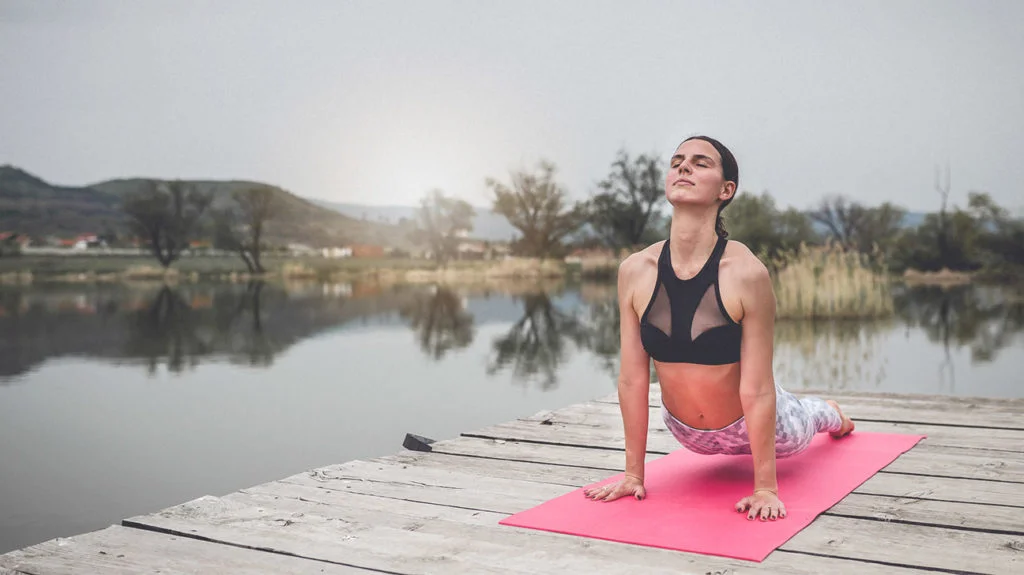Struggling with lower back pain each time you bend backward or stand up? You’re not alone. Many people experience discomfort from daily postures or workouts. That’s why mastering the kneeling back extension is a game‑changer—and why it should be understood before you ever try it. At Total Health Rehab, we believe in empowering you with knowledge, preventing injury, and helping you thrive.
What Is a Kneeling Back Extension—and Why It Matters
Understanding the Anatomy
The kneeling back extension targets your spinal extensors—muscles that run along your spine helping you arch backward. These include the erector spinae group, which stabilize your back and support upright posture.
Why It Can Trigger Pain
If you’ve ever felt a tug or flare-up during a arching motion, it’s likely due to:
- Weakness or imbalance in deep spinal muscles
- Poor movement patterns, like over‑arching or compensating with hips
- Pre‑existing irritation in discs, facets, or nerves
Understanding that anatomy and movement are intertwined is the key first step to safely building strength.
Common Causes of Discomfort in Kneeling Back Extensions
1. Injuries
- Muscle strains in lower back or core
- Sprained ligaments from sudden hyperextension
2. Medical Conditions
- Lumbar disc bulges that get pinched when bending
- Facet joint arthritis, which stiffens the spine
3. Structural Issues
- Excessive lumbar lordosis—an exaggerated arch
- Pelvic tilt imbalances, shifting pressure into the back
4. Lifestyle & Health Choices
- Sitting too much
- Poor core engagement
- Weak glutes and hip stabilizers
5. Nerve-Related Conditions
- Sciatica or nerve impingement, activated by extension movements
At Total Health Rehab, we assess all of these factors before recommending kneeling back extensions—or deciding on safer alternatives.
Diagnosing Your Readiness
Self‑Assessment at Home
- Wall test: Stand with your back against a wall; your head, shoulders, and buttocks should touch the surface evenly.
- Gentle arch: Slowly recline from standing. Discomfort or tingling? It’s a sign you need caution.
Professional Evaluation
At our clinic, we perform:
- Movement screening (e.g., FMS)
- Spinal and pelvic alignment checks
- Muscle strength & endurance tests
When to Seek Immediate Help
If you experience any of the following, stop extensions and consult us or your physician:
- Sharp or shooting pain
- Numbness/weakness in legs
- Bowel or bladder issues
These are red flags that you may need medical attention before exercising.
How to Do a Safe Kneeling Back Extension
Step‑by‑Step Instructions
- Start in a kneeling position, knees hip‑width apart, hands lightly at your waist or sides.
- Engage your core and glutes to stabilize your pelvis.
- Begin an eccentric movement: lift your chest first, then gently arch back.
- Lower slowly to the starting position, keeping control.
- Repeat 5–10 controlled reps, depending on tolerance.
Tips to Avoid Pain
- Keep your neck neutral—gaze forward, not up
- Limit range until you build control
- Use a heel cushion or pad for kneeling comfort
- Breathe steadily — exhale on the arch, inhale to return
At Total Health Rehab, we help you dial in postural details so you don’t compensate through hips or rib thrust.
Treatment Options: Beyond the Kneeling Back Extension
Home Remedies & Mobility
- Heat therapy, e.g. warm baths or heating pads, to reduce stiffness
- Gentle mobility drills like pelvic tilts and cat‑cow for flexibility
Physical Therapy in Clinic
We offer:
- Guided movement re‑training to deadlift alignment
- Strength‑plus‑mobility sequences, combining back extension with core & glute work
- Manual therapy—joint mobilizations and soft‑tissue release
Medical Interventions (When Needed)
- Targeted injections for facet/joint irritation
- Imaging referrals (MRI/X-ray) to clarify underlying issues
- Surgical consults for advanced spinal pathologies
Interventions are always paired with active rehab. We don’t just treat pain—we teach prevention.
Preventing Pain in Day‑to‑Day Life
- Strength & Mobility
- Exercises: dead bugs, planks, bird‑dogs
- Glute bridges, hip hinge drills
- Exercises: dead bugs, planks, bird‑dogs
- Movement technique
- Hip‑hinge mechanics for lifting
- Sitting posture low-back support
- Hip‑hinge mechanics for lifting
- Lifestyle habits
- Frequent movement breaks while sitting
- Proper ergonomic set‑ups (workstations, seats)
- Mixing in low‑impact cardio like swimming or cycling
- Frequent movement breaks while sitting
At Total Health Rehab, we tailor prevention plans to your daily routine—not generic templates.
Your Next Step: Restore Your Spine with Expert Help
If you’re ready to build back strength and prevent pain from returning, we’re here to help. Reach out to Total Health Rehab to:
- Schedule a comprehensive Movement Evaluation
- Learn safe, personalized kneeling back extension drills
- Join our core‑and‑back-strengthening sessions
Book your appointment now at Total Health Rehab and take the first step toward a stronger, pain‑free back.



